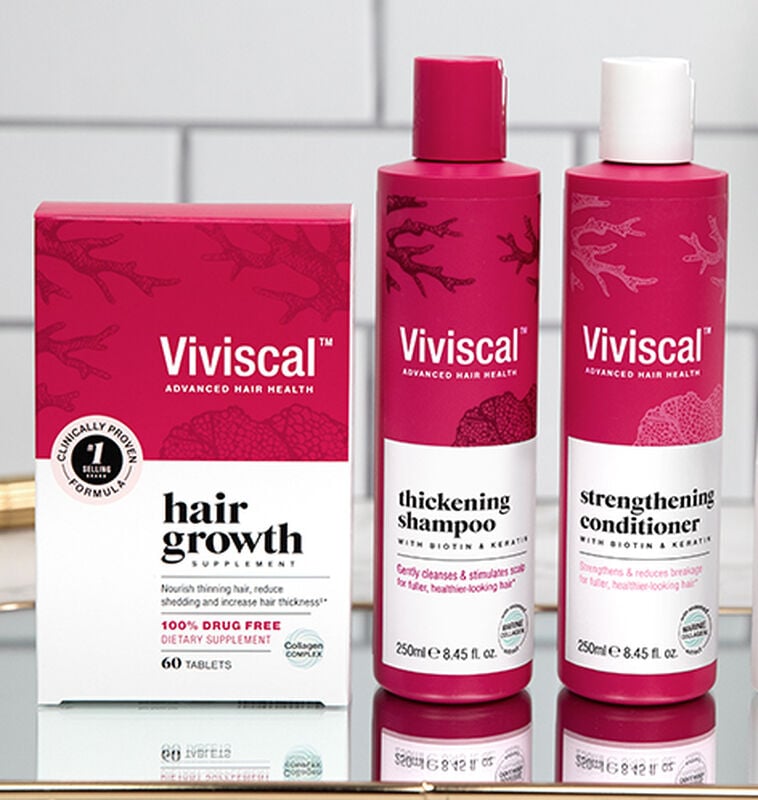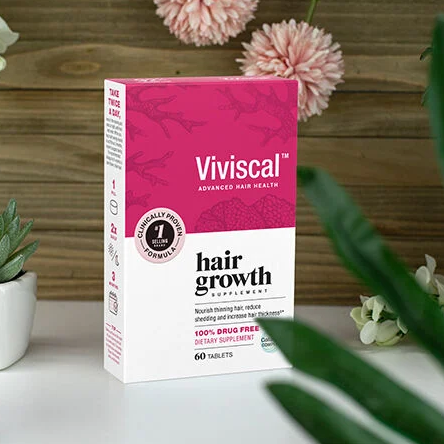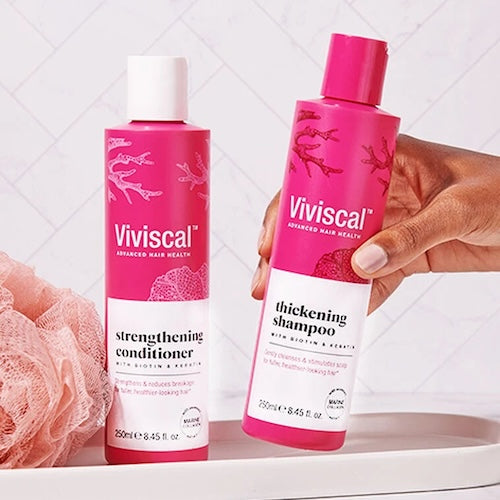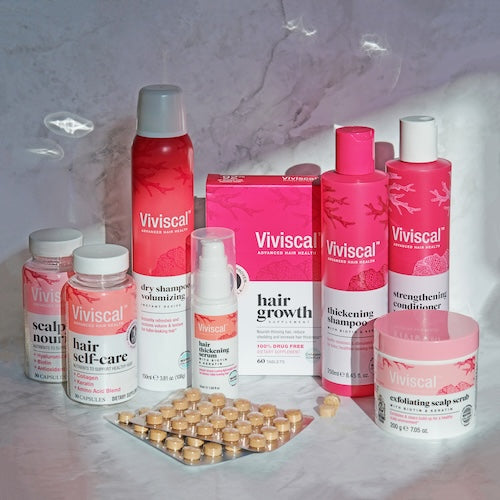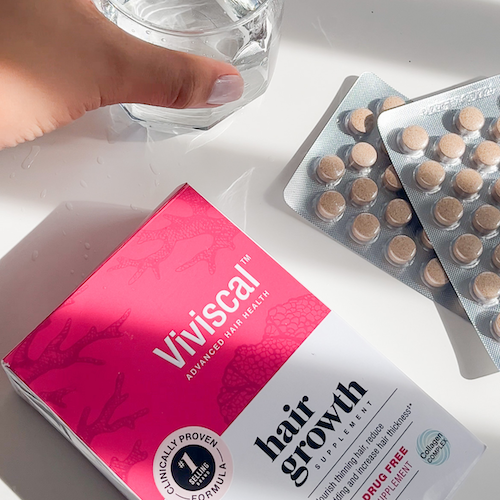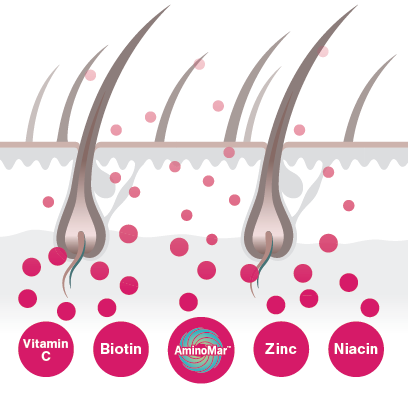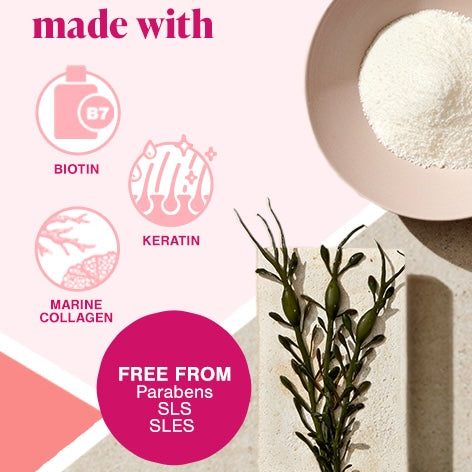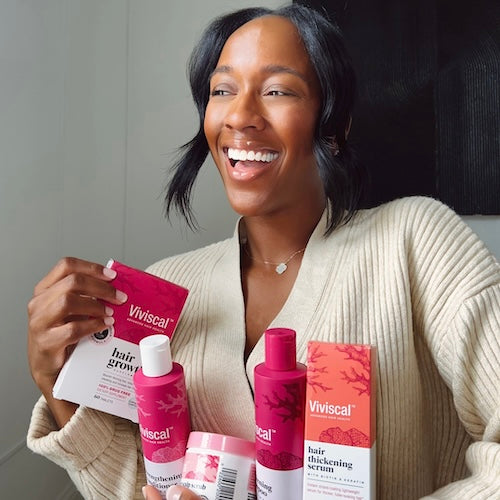Here at Viviscal, we get lots of questions about hair, thinning hair, and hair care. Let’s look at the most common questions we get asked about hair follicles:
What is a hair follicle?
A hair follicle is a key part of your hair. Let’s talk about all the parts of hair, so that you can see how hair follicles fit into the bigger picture.
-
Blood vessels – nourish the scalp and hair, bringing key needed nutrients directly to where they are needed for growth.
• Dermal papilla – cells just under the hair follicle that bring blood and nutrients to the hair follicle as well as regulating hair growth.
• Hair bulb – the rounded portion of the bottom of the hair root.
• Hair root – inside the follicle, this is the base of the hair.
• Follicle – this structure is underneath the skin and contains the hair root. This is where the hair starts its growth.
• Scalp – the skin on the top of the head.
• Hair shaft – this is the part of your hair that grows out of your head.
Can I see my hair follicles?
No, you cannot see your hair follicles. Hair grows from within the follicle, underneath the skin, so it’s not visible. The hair is ‘fed’ by blood vessels at the base of the follicle, which give it the nourishment it needs to grow. Between starting to grow and falling out years later, each hair passes through four stages: anagen, catagen, telogen and exogen. At any given time, each hair is at a different stage of the hair growth cycle.
Four Stages of Hair Growth Cycle:
-
Anagen (Growth phase) – this is the longest phase of the hair cycle, lasting several years. In this phase, the hair grows from the follicle.
• Catagen (Regression phase) – the follicle starts to slow down growth and stops getting nourishment from the bloodstream. This phase can last a few weeks.
• Telogen (Resting phase) – growth of the follicle has stopped. This phase can last from three months to a year.
• Exogen (Shedding phase) – this stage is when the hair falls out, and the cycle begins again.
Over time, the length of the anagen stage decreases, which weakens and thins the hair after each hair growth cycle.
What is hair shedding?
Hair shedding is that last phase of the growth cycle. Hair shedding is the hairs that fall from your head every day. It’s normal to shed about 100-150 hairs every day. Hair shedding above that amount can have several different causes. It’s best to talk with your health care professional or dermatologist if you have concerns about how much hair you are shedding.
What Do Dead Hair Follicles Look Like?
The truth is that you can’t really determine if your hair follicles are just resting or dead. Dormant hair follicles are resting, and they are temporarily not growing new hairs. Dead hair follicles are not growing new hair cells and won’t be able to be turned back on.
The only way to determine what’s happening with your hair follicles is for a health care professional to evaluate your hair and scalp.
If there is a round bit on the end my hair that just fell out – does that mean that the hair follicle is dead?
No, that round bulb is not the hair follicle, it’s the hair bulb. Don’t worry, this is part of the hair root, and the root will grow back and a new hair should grow in that location.
How to Keep Hair Follicles Healthy
The best thing to do to help your hair follicles is to take care of your insides and outsides. Meaning, following a healthy lifestyle will help support your hair follicles and scalp. Here are some tips to help:
-
Take Care of Your Scalp–Your follicles live in your scalp. Taking care of your scalp helps to ensure your follicles can support hair growth. Using a scalp scrub helps to exfoliate & clear build up for a healthy scalp environment. As with all of your skin, it’s important to protect your scalp from UV rays. Wear a hat when you are outside to keep UV rays from your head.
• Feed Yourself Well – Good nutrition helps support your body in many ways, including supporting hair health! Eating a healthy, delicious diet full of fruits, vegetables, whole grains, beans, lentils, as well as lean proteins will help support your body having the nutrition it needs to take care of itself.
• Don’t Stress About Stress – Stress itself can harm our hair, and push follicles into the telogen phase of the growth cycle abruptly. This means that hair will move to the stage of falling out sooner than normally. While this increased hair shedding typically resolves on its own a few months after acute stress, ongoing stress can also have an impact on our hair.
• Shampoo and Condition Wisely – Use lightweight shampoos and conditioners that are designed to support hair growth. Viviscal’s Thickening Shampoo promotes fuller, thicker, healthy looking hair, and Viviscal’s Strengthening Conditioner, delivers nourishing hydration without weighing hair down.
• Supplement Your Support – Try a nutrition supplement to support existing hair growth, like Viviscal supplements. Viviscal promotes healthy hair growth† from the inside for gorgeous hair on the outside. *
What should I do if I think something is wrong with my hair follicles?
If you are worried about excessive hair shedding and your hair follicle health, speak with your dermatologist or health care provider. They can help determine what is happening with your hair and have recommendations on best next steps.
Brought to you by the ViviscalTM nutrition experts.
*These statements have not been evaluated by the Food and Drug Administration. This product is not intended to diagnose, treat, cure or prevent any disease.
† Existing hair growth
